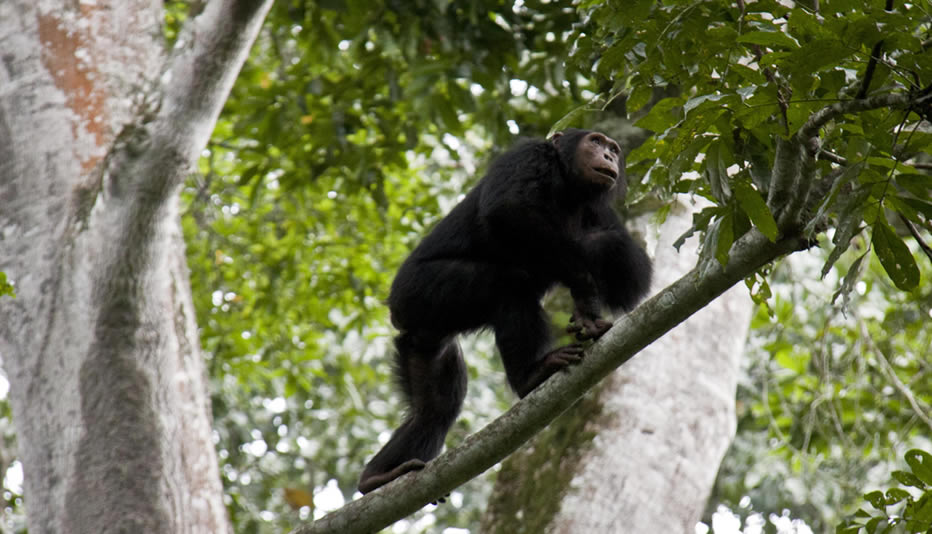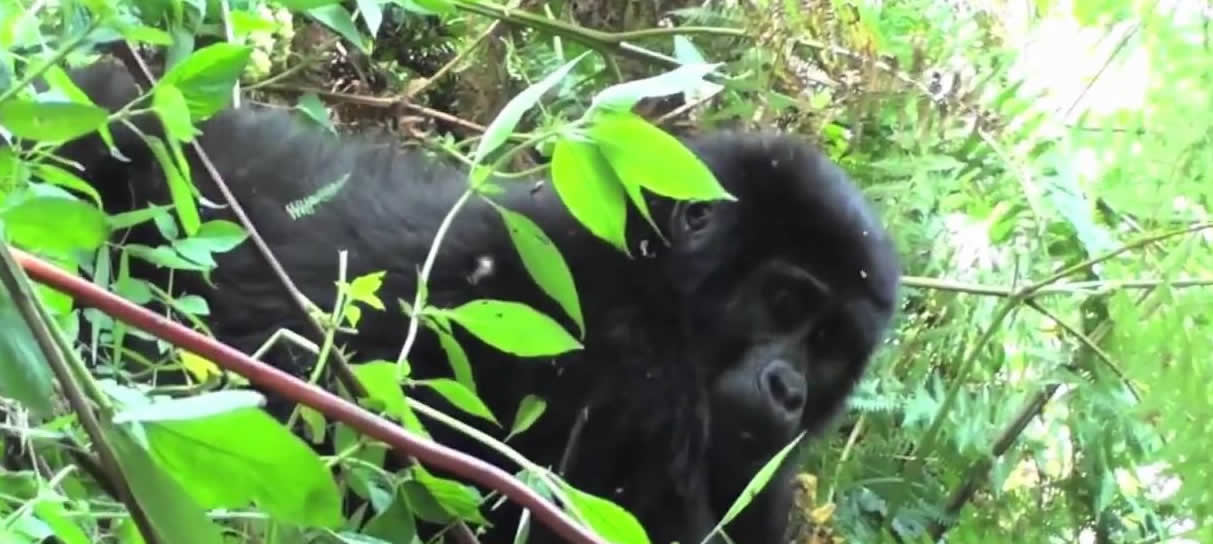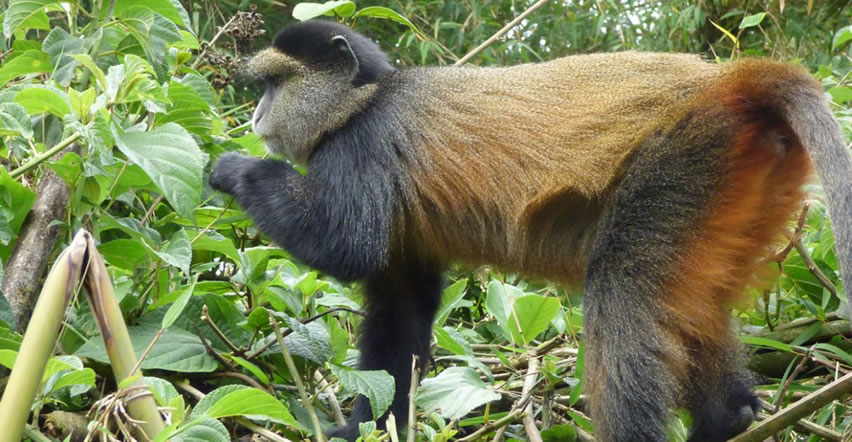
Kyambura Gorge; the valley of the Apes – Chimpanzees in Uganda
Watching Kyambura Goege from above, you may think there is nothing more than plants in the valley. But brave the mountain down and your vision will be handled to nature’s hospitality. Kyambura Gorge is located in the northeastern part of Queen Elizabeth National Park and is 100 meters long. The size differs at different points.
The sounds of different wildlife and birds, in the trees and plants and in the water, spread the air with rare music. On top of being a home to chimpanzees, there are many other primates to be found here, such as red-tailed monkey, black-and-white colobus and vervet monkeys. One can also see hippos and large hogs. River Kyambura snakes its way through the bottom of the valley that is created by different varieties of trees and plants over 100 years of age.
Some trees’ roots have grown so big and intricate that they appear like gnarled wooden boats, while others lie on the floor, having started their corrosion process right where they fell decades ago.
The dry season left much of Queen Elizabeth National Park area dry, but this wonderful gorge is the much needed oasis, both for animals looking for refreshment, and for people, looking for a sight for weary eye. Water flows from rocks and makes the gorge natural. Rocks that seem to be in various declares of crumbling take a position out, probably where they combined to a stop centuries ago when the volcano threw up in a violent shake. Kyambura Gorge is sometimes known as the Valley of Apes.
Tourists who fear to navigate the gorge view it from the top. Braver souls hike the gorge down through well beaten paths, with or without the help of a tour guide. Bird viewers would really like it here. In this heaven, winged beauties fleet from shrub to shrub, from water surface place to hidden hest in their everyday tasks.
“The Gorge has variety different eco-systems which need to be preserved,” says Nelson Guma, the Queen Elizabeth national park area conservation manager.
Uganda is a bird watching heaven, gaining a large number of holidaymakers every year. Weekly, we will feature a different bird in this place. These days we look at the The Grey Crowned Crane
The grey crowned crane is Uganda’s Nation Bird, incorrectly known as the crested crane. It has a spectacular walk and is usually calm and friendly. It attracted then governor of Uganda, Sir Frederick Jackson, in 1893 to search for authorization to make it a symbol for the Uganda protectorate by embellishing it on the Union Jack.
The response from Great Britain to his request read thus: “His Majesty (George V) has accepted of the golden crested crane being furthermore implemented as the logo to be placed on the flags flown by the governor of Uganda and all vessels belonging to the protectorate govt.” Its crown has the three colors also found on the national flag — Black, Yellow and Red.
There are 16 different varieties of cranes on the globe. Four are in African, such as our nation bird. The grey crowned crane is endangered. It is losing its environment and individuals use it for witchcraft. Crowned cranes eat grass, plant seeds, bugs, seafood, and little reptiles. Crowned cranes are monogamous and pair for life. They have intricate courtship performance, dancing and creating love-calls to attract partners.
Did you know that some culture depend on the cranes to tell the time of the day? Like cocks, they make call at certain time. Cranes have the capability of dancing when individuals clap and sing.
They reproduce in swamps but unfortunately, their breeding grounds are reducing due to widespread wetlands reclamation in Uganda. Nature Uganda reports that the variety of grey crowned cranes in Uganda have decreased from more than 70,000 in the Nineteen seventies to less than 10,000 this year. If extreme actions to secure them are not taken, the crowned cranes might.



